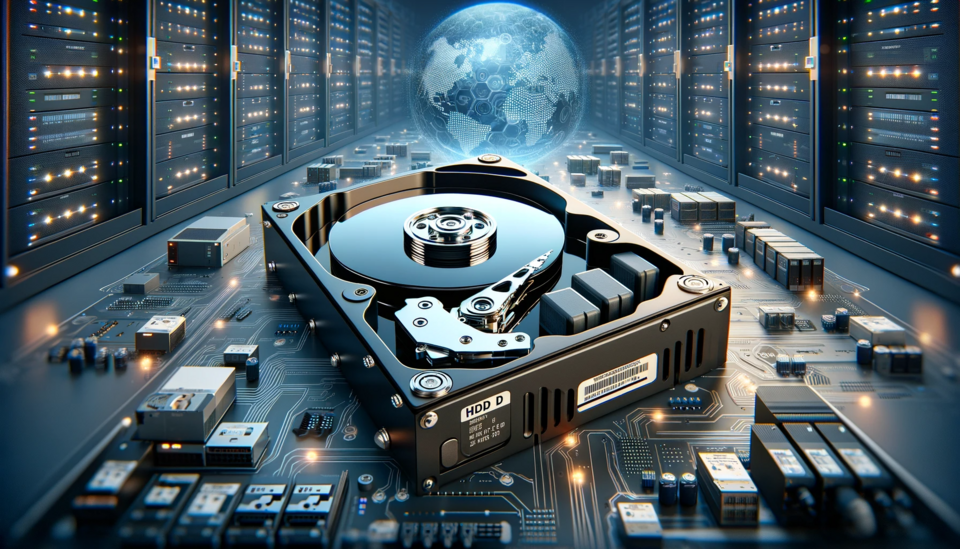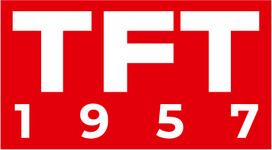Hard disk drives (HDDs) are a tried and trusted data storage technology that has stood the test of time. Critical benefits such as high capacities and low cost per capacity unit mean they provide an excellent foundation for data storage strategies in various industries and applications such as data centres, surveillance, gaming, and cloud computing.
So, what does the future hold for HDDs? Can they retain their relevance in the face of other storage solutions? Here, we look at some of the significant trends that will determine the role of HDDs in the data-driven era.

Navigating the balancing act between capacity and cost
There has been intense research and development effort to ensure that HDDs remain competitive in the medium term. Recently, Toshiba launched the 22TB MG10F, a conventional magnetic recording HDD that leverages 10-disk helium-sealed design, adding a 10 per cent capacity increase to the 3.5-inch form-factor MG10 range. Importantly, though, engineers have managed to pack more terabytes into the same form factor and the same power consumption at roughly the same cost. This is a critical point. At present, HDDs maintain a gap in cost per capacity with flash storage of around a factor of seven. This advantage remains the lifeline of the HDD. There is little point in adding more capacity if costs rise exponentially. Indeed, these efforts mean HDDs may reach 40 or even 50 terabytes without approaching comparable costs with flash storage.
Two other factors must also be considered. Firstly, there needs to be demand for higher capacity – without it, product development becomes pointless. This market driver is a certainty. Even if HDDs reached as high as 100 terabytes of capacity, our data-driven society means we would fill it in no time at all. Secondly, it has to be technically achievable. Toshiba continues to invest in delivering these incremental advances, with teams of engineers and materials scientists performing qualification tests and other procedures daily. This effort is ongoing and will remain while demand for HDDs with higher capacities continues.

Meeting the sustainability demands of data centre operators
Data centres still depend on HDDs as the prevalent storage devices for hyperscale facilities serving the cloud. Here, the 2TB capacity increase mentioned above represents a significant advance, as higher capacities in the same form factor offer substantial advantages in rack space in often space-constrained urban locations. Increasingly, data centres combine individual HDDs through Redundant Array of Independent Disks (RAID) techniques that can create larger and speedier storage solutions. It is common to see 24 HDDs integrated into one housing unit, and this is likely to keep rising – possibly to somewhere in the region of 60 to 120.
Sustainability
The second significant trend in data centres is sustainability, and there are two distinct ways that HDDs can make a difference. Firstly, regarding energy efficiency, if you want to spin a storage disk at a certain speed and access it at a specific rate, you inevitably come up against the laws of physics, typically requiring about 10 watts per unit. Helium technology launched several years back helped cut that figure to around 7-8 watts. But the only way to become more energy-efficient than that is to introduce more capacity for those 10 watts – which recent advances have helped deliver. Also, data centre engineers are thinking about how to use the HDD in a more power-optimised way, possibly through idle or power-down modes.
Recycling
The other notable sustainability trend is recycling. The first wave of HDD deployments in data centres for the cloud took place six or seven years ago, and those components are now coming to the end of their lifecycle and are being decommissioned. HDDs are comprised of aluminium and copper, making them much easier to recycle than other components and materials such as PCBs, chips, and plastics. Consequently, we expect HDDs to become an integral part of the circular economy based on services such as recycling and reuse.

Providing storage solutions advice to end users
Most HDDs go into cloud and enterprise applications, and these end users increasingly expect HDD suppliers to act as collaborative partners to help establish the best technologies and configurations for their specific deployments. To meet this need, Toshiba’s European HDD laboratory can combine multiple HDD combinations to test function and performance. Most recently, this has seen the installation of a high-capacity top-loading JBOD enclosure with 78 x 18TB HDDs, giving a total capacity of 1.4 petabytes, which is connected to a server. This infrastructure makes it possible to exercise one single HDD to establish its performance rate per MB/sec. Then, it is possible to switch to any combination of the 78 units, adding them incrementally and accurately measuring the total outputs. With all 78 HDDs active, the performance is rated at almost 17 GB/sec.
This infrastructure can also be used to perform detailed trade-off calculations, helping end users settle on the correct configuration for the task at hand. Without it, they might have to invest in their ports and HDDs as test samples, which is not always cost-effective. Recent activities at the Toshiba Electronics Europe lab have seen the testing of HDD combinations in a way that is fast enough for archiving data, video streaming for online data like navigation systems, and operating web shops. This collaborative activity is crucial for enterprises deploying HDDs in large-scale applications – ultimately extending the lifespan of this ever-evolving technology.

Retaining relevance in write-intensive surveillance applications
The surveillance sector continues to have a high requirement for data storage, with the trend towards higher-quality, 24/7 video streams supported by affordable hardware that is reliable enough to ensure operation. Historically, if there is a requirement for a storage element inside the camera itself, this has typically been a flash component, while the central recorder often comprises one or more HDDs. In certain parts of the world, such as central Europe, where GDPR requirements mean only a small amount of recording can be retained for a short period, system vendors may consider a low-capacity SSD for that central storage too – as that small capacity means it achieves cost parity with HDD in specific scenarios. However, such a setup does not overcome the challenges of write-intensive operations. High over-ride cycles where data can only be kept for a few days would quickly wear out a flash component. There are no such constraints for HDDs.
Sequential recording
Other benefits also come to the fore. Surveillance systems always deal with sequential write operations, in which data is written continuously. HDDs excel at sequential write performance, making them the obvious solution for the sustained and sequential nature of video recording. Also, HDDs are non-volatile storage devices that retain data even when the power is turned off. This is an essential consideration for surveillance systems, where data integrity and preservation are required in case of power outages or unexpected system shutdowns. Ultimately, then, HDDs will continue to play an important role in surveillance.

Maintaining a future role for HDDs
So, it is clear that HDDs do have a bright future. Toshiba remains committed to investing in research and development to drive incremental advances while expanding production capacity to meet demand. And it will be through continued collaboration with data centre equipment vendors, surveillance systems integrators, and computing OEMs that HDDs will continue to have a central role to play in the data-driven era.
Author: Rainer W. Kaese, Senior Manager, HDD Business Development at Toshiba Electronics Europe GmbH
About Toshiba Electronics Europe
Toshiba Electronics Europe GmbH (TEE) offers European consumers and businesses a wide variety of hard disk drive (HDD) products plus semiconductor solutions for automotive, industrial, IoT, motion control, telecoms, networking, consumer and white goods applications. Next to HDDs, the company’s broad portfolio encompasses power semiconductors and other discrete devices ranging from diodes to logic ICs, optical semiconductors as well as microcontrollers and application specific standard products (ASSPs) amongst others.
In addition, TEE also offers Toshiba’s SCiB™ battery cells and modules with lithium titanium oxide (LTO) for heavy-duty applications and Silicon Nitride (SiN) ceramic substrates used in power semiconductor modules, inverters and converters for their heat dissipation characteristics and strength.
TEE has its headquarters in Düsseldorf, Germany, with branch offices in France, Italy, Spain, Sweden and the United Kingdom providing marketing, sales and logistics services.










